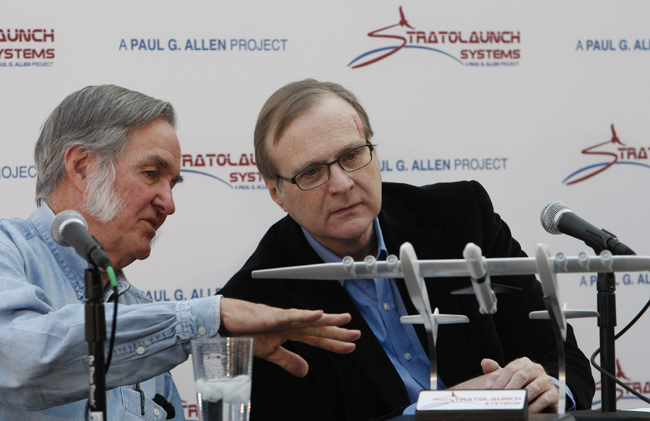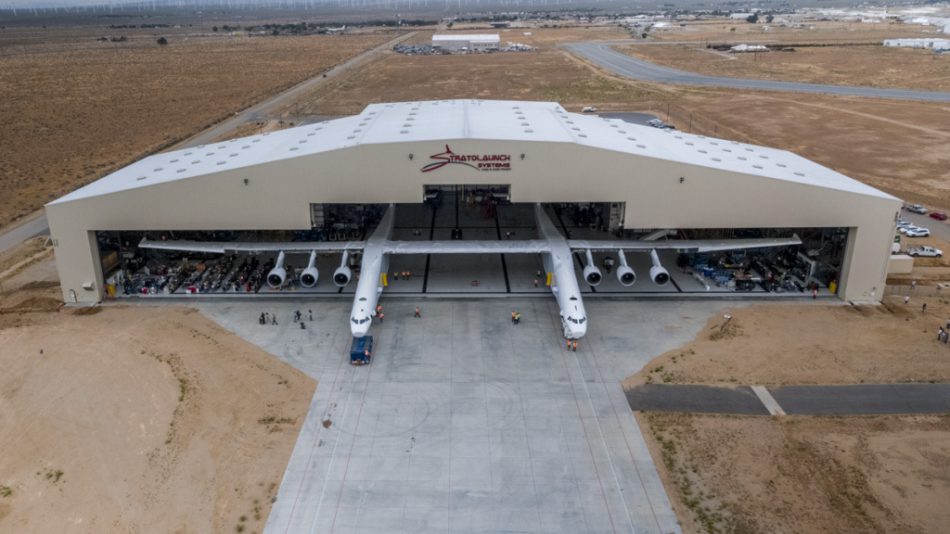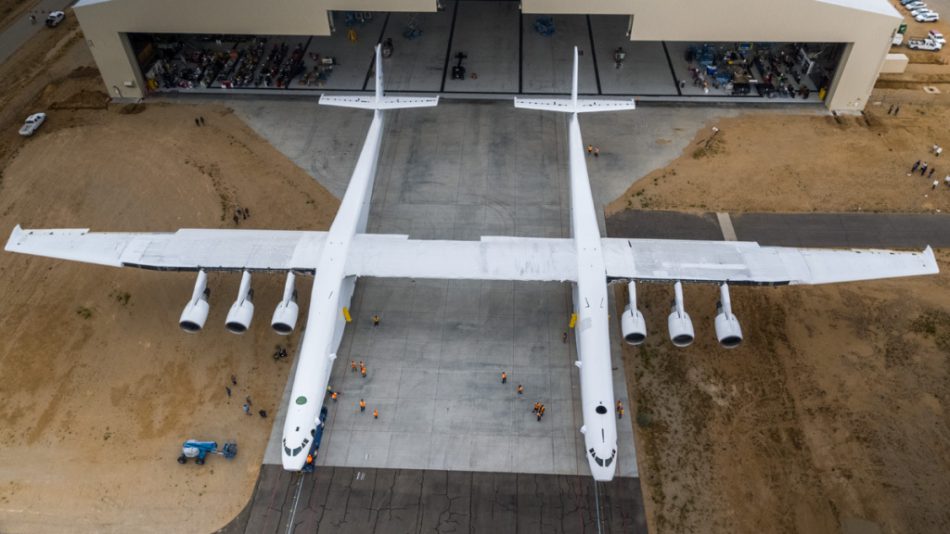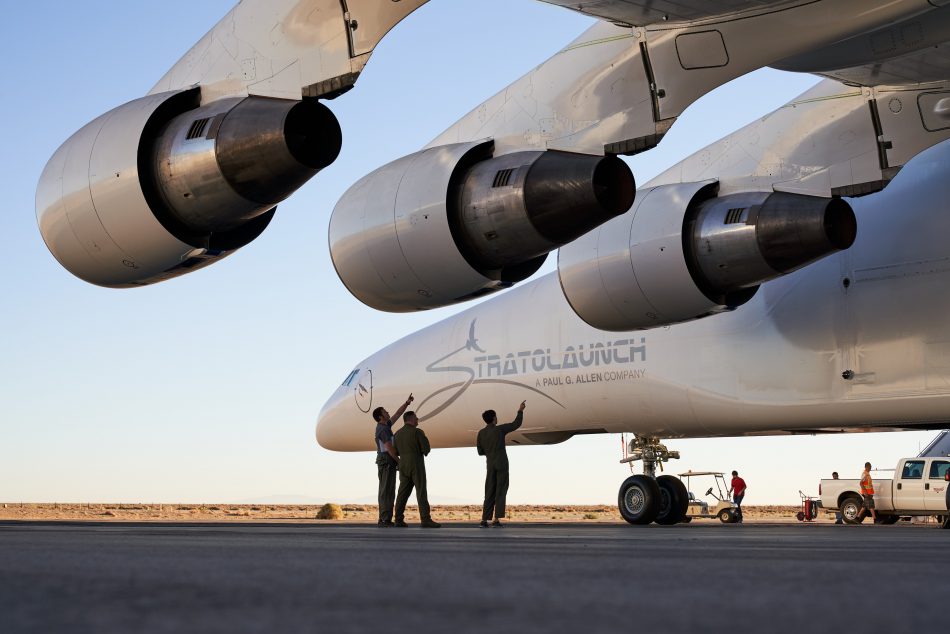
Back to selection

Supplier
Stratolaunch Systems
Stratolaunch Systems
505 5th Ave S.
Suite 500 WA
98104 Seattle
USA
Stratolaunch Systems, a subsidiary of Vulcan Aerospace, is a space transportation venture developing a new air launch to orbit system. The corporate headquarters is located in Seattle, Washington USA.
The purpose of the new company was to develop an aircraft-launched space transportation system, similar to Pegasus rocket which was successfully operated by Orbital ATK (Northrop Grumman), Virgin Galactic WhiteKnight and few other projects, but on an orbital rather than suborbital level.
The project is a mobile launch system with three primary components; a carrier aircraft built by Scaled Composites (currently a subsidiary of Northrop Grumman), a multi-stage payload ‘launch vehicle’ which would be launched at high altitude into space from under the carrier aircraft, plus a mating and integration system by Dynetics.


The Stratolaunch system will be able to deliver payload to space with lower cost comparing to conventional rockets and will be more independent from weather conditions; it will be also independent from expensive rocket launch sites due the fact that it will operate from ordinary runways.
It will start from airfield, reach designated altitude, deploy rocket with payload, return and land on the airfield. Stratolaunch Systems first test flight was conducted in 2016.
Since 2015 Stratolaunch Systems operated under the supervision of Paul Allen’s new company Vulcan Aerospace, a subsidiary of Vulcan, Inc.
In January 2019, Stratolaunch stopped the development of its own air-launched family of launch vehicles, following the death of founder Paul Allen in October 2018, who had been the source of funds for the capital intensive development program. With a lack of vision and no clear direction, the company became a profligate project that soon burnt the billions that it had received from Vulcan, Inc, which was Paul Allen’s investment arm.
In October 2019 Stratolaunch was sold to private equity firm Cerberus Capital Management L.P. and continued regular operations.
Company History
The project started in 2010 and officially announced in December 2011 by Microsoft co-founder Paul G. Allen and Scaled Composites founder Burt Rutan, who had previously collaborated on the creation of Richard Branson Virgin Galactic’s SpaceShipOne. The project started almost a year before the public announcement was made. Development costs were initially projected to be 300 million USD in 2011.
To reduce costs, Paul Allen decided to buy two Boeing 747-400 to utilize engines, avionics, landing gear and minor parts for building prototype of Stratolauncher. Plane was designed from the beginning as extremely large, equipped with twin fuselage and wingspan at 117 m (largest wingspan plane ever produced) and able to lift up to 250 tonnes (rocket with payload).
Place with latches for second stage rocket were designed between fuselages. Propulsion of the plane will be six engines from Boeing 747-400, which will be also source of avionics, landing gear and other minor systems. Engines will be installed under the wings on the left and right side of the twin fuselage. Pilots and operators will take place in right fuselage; both fuselages are different in shape than Boeing 747-400-they are quite similar to shape of the fuselage in flying boat.
The launch system was to be composed of three main components, each provided by one of the corporate partners that composed Stratolaunch. A 116 wingspan carrier aircraft was to be designed by Scaled Composites. A multi-stage booster, based on the Falcon 9 rocket, was to be developed by SpaceX. A mating and integration system to interface the two was to be designed by Dynetics.
Dynetics actually began work in early 2010 and had approximately 40 employees working on the project as of December 2011. Dynetics was cited as responsible for the total systems engineering, integration and testing, which includes aerodynamics, loads, and interfaces. It was announced the SpaceX Corporation was also already working on the design for the rocket-powered space vehicle components of the system.
Since the formation of the partnership, the Stratolaunch launcher has undergone some design changes, including a chine extended along the wing root to provide lift. The changes drifted far enough away from the original idea for a winged-Falcon 9, that it lost commonalities with that rocket. Development of the new design would have required changes to SpaceX’s manufacturing process and departed from the company’s objective of achieving cost effective spaceflight through simplicity and commonality of design.
On November 27th 2012 SpaceX left the Stratolaunch Partnership. Stratolaunch and SpaceX had amicably agreed to end the contractual relationship because the current launch vehicle design had departed significantly from the Falconderivative vehicle envisioned by SpaceX and did not fit well with SpaceX long-term strategic business model.
SpaceX was then replaced in the Stratolaunch Partnership by Orbital Sciences (Orbital ATK, aka Northrop Grumman), the company behind the air-launched Pegasus rocket first launched in 1990. Orbital Sciences was trying to match SpaceX’s feat of providing commercial cargo supply runs to the International Space Station.
Orbital ATK would initially provide multiple Pegasus XL air-launch vehicles for use with the Stratolaunch aircraft to provide customers with unparalleled flexibility to launch small satellites weighing up to 1,000 pounds into low Earth orbit. Pegasus carried out 42 space launch missions, successfully placing more than 80 satellites into orbit for scientific, commercial, defense and international customers.
In November 2015 Gary Wentz stepped down as CEO to join United Launch Alliance (ULA) to lead human launch services for ULA. Jean Floyd replaced Wentz as CEO of Stratolaunch Systems and Executive Director of Vulcan Aerospace.
Vulcan ended its contract with Orbital ATK in mid-2015 and indicated that a decision on a new rocket for the Stratolaunch Carrier Aircraft would be made in late 2015.
The company completed its first 88,000 sq ft. (8,175 sq m.) composites production building in October 2012.


In February 2013, the construction of its 92,640 sq ft. (8,606 sq m.) carrier assembly hangar and operations facilities at the Mojave Air and Space Port was completed. The hangar would house the world’s largest aircraft, 380 ft. (116m) wingspan.
In May 2017, the Stratolaunch was rolled out for the first time to begin fueling tests, the first of many ground tests. In that same year, in December, the carrier airplane was rolled out for the first taxi test on the runway at the Mojave Air and Space Port in California, USA.
In January 2019, Stratolaunch announced it was halting development of its own air-launched family of launch vehicles. This followed the death of Stratolaunch founder Paul Allen in October 2018, who had been the source of funds for the capital intensive development program since its founding. With a lack of Vision and no clear direction, the company became a profligate project that soon burnt the billions that it had received from Vulcan, Inc, which was Paul Allen’s investment arm. In April 2019, Jean Floyd remained CEO of Stratolaunch.
After years of delays the carrier aircraft first flew in April 2019, at the Mojave Air and Space Port, reaching 15,000 ft (4,600 m) and 165 kn (305 km/h) in a 2 h 29 min flight.
On 31 May 2019, it was reported that the company would cease operations and that sale of its assets was being explored. In the event, the company remained in operation and posted job openings, including listings for test pilots, in September that same year.
In October 2019 holding company Vulcan, Inc. sold Stratolaunch to private equity firm Cerberus Capital Management L.P, specialized in the purchase of distressed companies. Stratolaunch continued regular operation and began to rapidly reacquire staff in Q4 2019, growing from just 13 employees in October 2019 to 87 employees by mid-December 2019. The company redirected its mission to providing high-speed flight test services.
In May 2023 the company acquired the modified Boeing 747 ‘Cosmic Girl’ from smallSat launcher Virgin Orbit in a 17 million USD transaction. Virgin Orbit filed for Bankruptcy in April 2023 after the failed ‘Start-Me-Up’ mission on January 9th, 2023. Virgin Orbit laid off the majority of its workers in March. The reduction in workforce followed after pausing operations mid-March after the company was unable to secure new funding.
All trademarks, logos and images mentioned and showed on this page are property of their respective owners.
Resources
www.stratolaunch.com
www.wikipedia.org
www.aerospace.vulcan.com
www.spacesafetymagazine.com edition 28th November 2012
www.flyorbitnews.com edition October 10th 2016
www.yahoo.com Yahoo News edition October 2nd 2015
www.cnbc.com edition June 14th 2019
www.spacenews.com edition January 18th 2019
www.theverge.com edition October 11th 2019
www.sfvbj.com edition June 3rd 2019
www.failory.com
www.craft.co
www.satellitetoday.com edition May 23rd, 2023